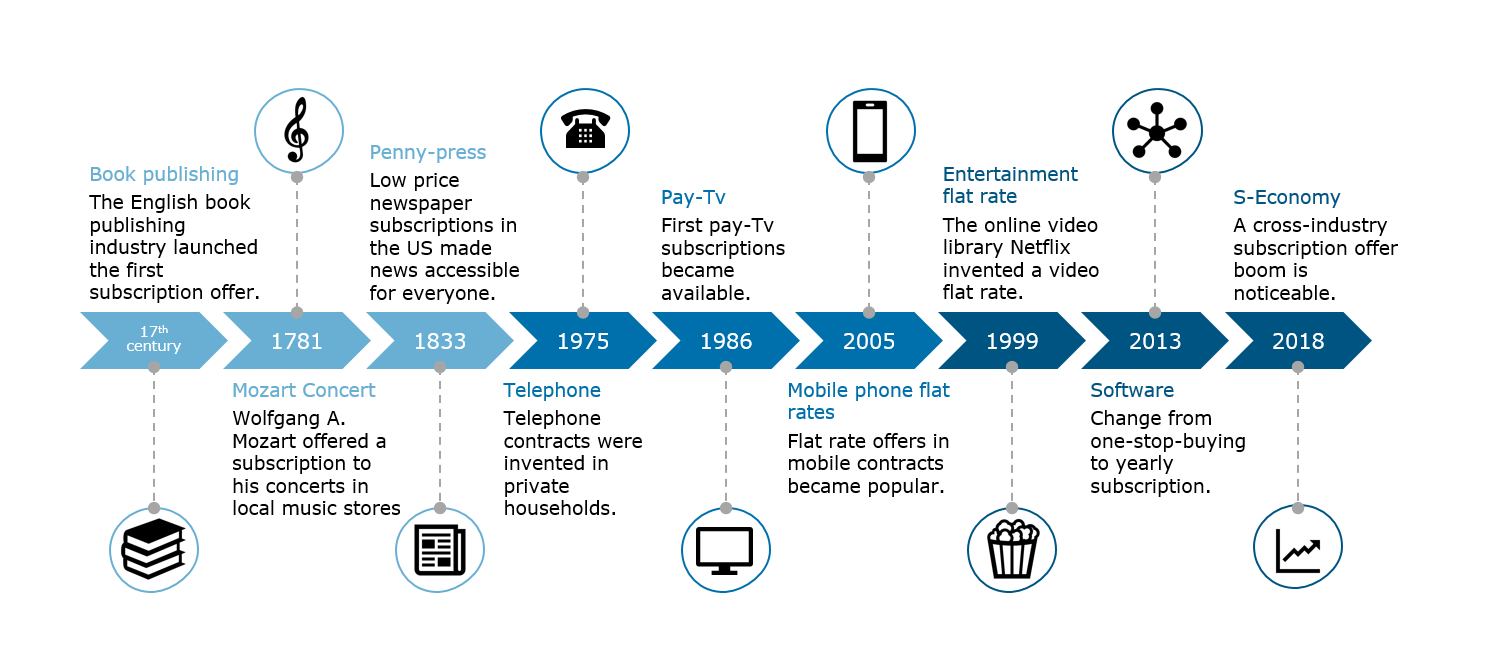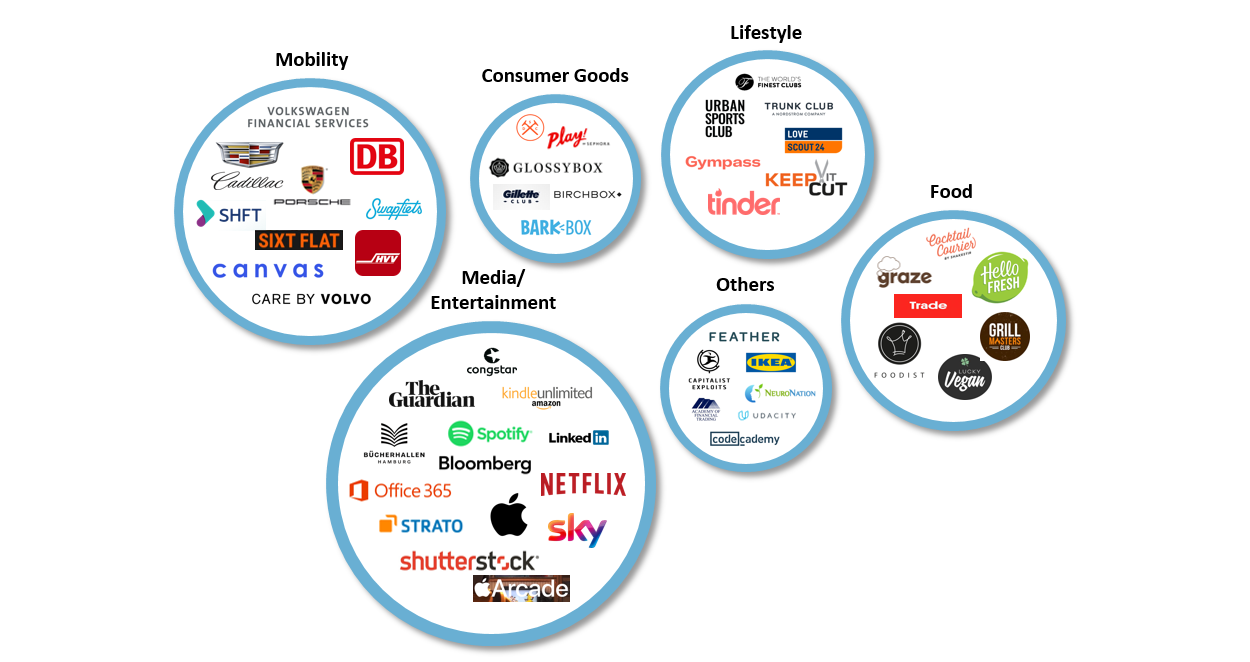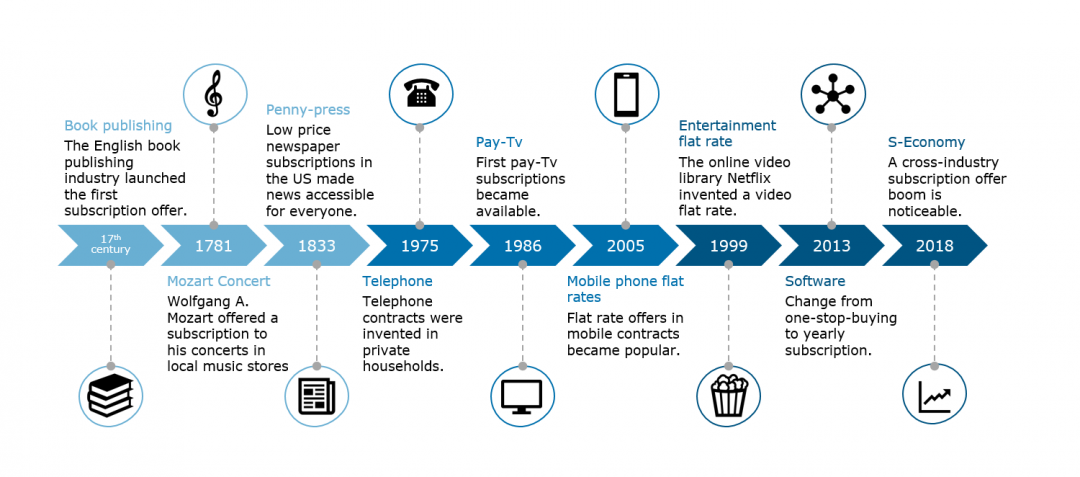Subscription models – the end of car ownership?
Blog: Capgemini CTO Blog
Subscription model explained
Recently, there has been a fundamental change in consumer behavior; the societal trend towards individualization has resulted in the rise of the so-called subscription economy. Customers increasingly prefer the continuous and flexible use of services to purchasing and owning a product. In subscriptions, a customer pays a recurring price at regular intervals to receive or access a product or service.
One step back in history
Across industries, we are observing a rising number of very different types of subscriptions with drastically increasing use for the most popular services such as Netflix, Spotify, or Amazon Prime. The rise of the subscription business model is often closely associated with these players, although the roots of subscription go far back in history – the timeline in Figure 1 provides you with some examples. You might be surprised that subscriptions were already used to promote concerts of Wolfgang Amadeus Mozart.

It becomes clear that a subscription for a product or service is nothing new. But digitalization and the advancement of computers, smartphones, and wearables have fundamentally changed the way these products and services can be delivered to customers. At the same time, a more service-demanding customer has developed, allowing subscription models to gain new momentum.
Cross-industry subscription
Today, we come across a large variety of subscription models in manifold industries – from entertainment, media, gaming, food, consumer goods, apparel, furniture, to software and mobility.
But which industry and player is the most successful? Players such as Netflix and Spotify come first to mind – and looking at the number of subscribers, revenue, or market capitalization, it becomes pretty obvious that they constitute the benchmark in developing highly successful subscription businesses. The number of Netflix users has grown by about 700% in the past nine years, to 148 million paying subscribers globally in Q1 2019.[1] Similarly impressive is Spotify, whose user base has tripled within the last four years to around 217 million users today.[2]
Beyond these staggering numbers, the entertainment industry is merely one of many with subscription models on the rise. Figure 2 provides an overview of selected examples of brands in different industries engaging in subscription-based offers.

But why are subscription models so successful? Why do customers choose subscription products? And what is important to them? Which success factors, challenges, and pitfalls do companies need to consider in designing a subscription for a product or service?
We will answer these questions in a series of blog articles, following this kick-off article, with a special focus on subscription models in the automotive industry. Our industry focus is based on our conviction that the sector could be fundamentally disrupted by subscription models as they pick up on the shift away from vehicle ownership and potentially serve today’s mobility needs better than traditional sales models.
To provide profound answers to the raised questions, we closely observed the development of subscription models over the past year, analyzing the absolute growth, geographical spread, and the adjustment of existing products in the markets.
Combining these insights with the results of our survey with customers in the US and Germany, we will outline what providers need to consider to meet the actual pain points, desires, and needs of customers.
So stay tuned! Our next article will introduce you to the incredible bandwidth of subscription offerings in different markets, the key points of product differentiation, and how providers adjusted their first pilots over time.
Thank you to the co-authors, Corinna Wolf & Manuel Müller-Ost.
[1] statista (2019) – number of Netflix paying streaming subscribers worldwide from 3rd quarter 2011 to 1st quarter 2019.
[2] statista (2019) – number of Spotify monthly active users (MAUs) worldwide from 1st quarter 2015 to 1st quarter 2019.
Leave a Comment
You must be logged in to post a comment.








